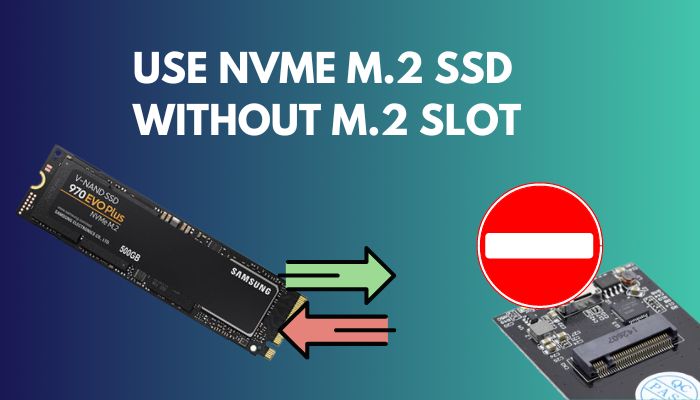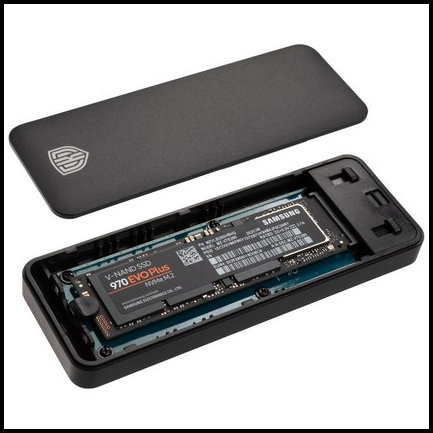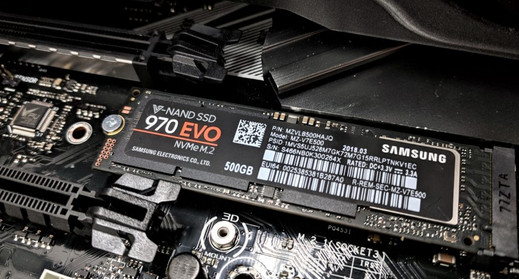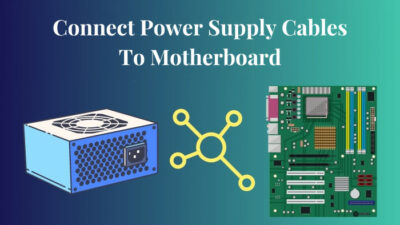All laptops and PCs might not support NVMe SSDs. The M.2 ports won’t be available on all computers. But if your system does not physically or internally support NVMe, you can still use it with a USB connection and an M.2 container.
As a hardware engineer, I have researched for long hours and gathered some valuable and fruitiest solutions for you. I have also been applying this method for my PC or friends’ PC upgradation.
So keep reading this post. I am giving you the best feasible solutions for using NVMe SSD without M.2 slot.
You may also like to read about Access SSD from another Computer.
How to Use an NVMe M.2 SSD Without M.2 Slot?
Using an NVMe M.2 SSD without an M.2 slot is straightforward. Even you can execute the process on your own. You really won’t need any professional to do so. No matter what enclosure you choose, this method will be the same across all devices.
But before that, go through our epic guide on how to Install a Second SSD?
Follow the process below to use an NVMe M.2 SSD without an M.2 slot:
- Purchase an M.2 NVMe SSD enclosure from an authentic shop. You can buy it from trusted online shops.
- Remove the top cover.
- Place the NVMe SSD at an angle within the port.
- Push the SSD down, then secure the screw or holding plug.
- Close the plastic cover and attach the box to the system now.
Now it’s ready to use. How simple is that! Isn’t it? Those processes are also the same if you are planning to implement them for your laptop.
If necessary, you will have to download an NVMe driver. Usually, as soon as the USB is connected, your gadget will start to function.
Your enclosure serves as a converter in this situation. However, the NVMe driver for your SSD may need to be installed in some circumstances. You may easily obtain your drivers from the official web page of your SSD by visiting there.
If all of your M.2 ports are occupied, you have to follow one solution. The only options are to utilize another NVMe or upgrade your current NVMe SSD with a greater storage model. But without its M.2 connector, utilizing another NVMe SSD won’t be viable. Therefore, all you need to do is place your SSD within an M.2 SSD enclosure.
The enclosure and your NVMe may then be connected to your system through the USB port.
Another choice is to utilize an M.2 NVMe adaptor if you have a desktop PC. You can place the NVMe SSD on this adapter once it has been inserted into your PCIe port that is x4 or above.
Related contents you should read about how to Delete Partitions on SSD
Are All M.2 SSD Enclosures Same?
There are two different types of M.2 Enclosures available on the market. The first is the B-Key enclosure, designed to only function with M.2 SATA SSDs, not NVMe ones. You’re not required to purchase that one.
An M-Key, port designed for both M.2 NVMe and M.2 SATA will be included in the second kind. However, in this scenario, you may utilize the enclosure for M.2 NVMe SSDs. Therefore, you must constantly verify if your enclosure supports M.2 NVMe or simply M.2 SATA.
Therefore, you must constantly verify if your enclosure supports M.2 NVMe or simply M.2 SATA.
Additionally, your purchase will be diversified in another way. While some enclosures may be opened and installed without the need for tools, others require screwdrivers. The choice of a tool-free enclosure will be advantageous.
Some more guides on how to Move Files from SSD to HDD?
How Does an NVMe SSD Work?
M.2 PCIe NVMe is the entire name of the NVMe SSD. Two different types of PCIe interfaces are seen. NVMe SSDs in generations 3 and 4 are available.
The Gen4 SSD is significantly quicker than the Gen3, with read-write speeds of up to 7000 MB/s. Up to 3500 MB/s may be achieved using Gen3 SSDs. In a nutshell, this is the PCIe Generation.
Therefore, your NVMe SSD connects directly to PCIe lanes, which are the quicker transfer lanes, when you attach it to the motherboard of your desktop or laptop. These SSDs may achieve a very high speed in this fashion.
The M.2 port, however, will be quite tiny and appear to have no connection to the PCIe because the conventional PCIe ports are much larger when viewed physically.
Again, M.2 is the optimum form factor for these tiny but incredibly fast NVMe SSDs. Remember that an M.2 port with an M-Key will connect an NVMe SSD (Right-key). Another M.2 port type with a B-Key (Left-Key) will not allow any NVMe.
Also, check out our separate post on should I Partition my SSD?
FAQ
Can You Use an NVMe SSD in a Non-NVMe Slot?
Actually, no. You must verify whether your laptop’s SSD and slot are SATA or (PCI-Express) NVMe. They must match up.
Can I Use M.2 SSD External?
M. 2 SSDs can also be put within an enclosure. Either USB-A or USB-C connections are available for enclosures. Use an NVMe M if your PC is USB-C and NVMe compatible.
Can I Use M 2 NVMe SSD in an M.2 SATA Slot?
An M.2 NVME SSD will fit but often won’t function unless the BIOS offers an option to configure the m. 2 slot to either SATA or NVME.
Conclusion
After reading this post, you are acknowledged for using an NVMe M.2 SSD without M.2 slot. It is a pretty simple process. It only takes five simple steps.
First, buy an M.2 NVMe SSD enclosure and remove its top plastic cover. Now put the NVMe SSD into the case and screw to tighten the slot.
You should also download and install drivers if you need to do so.
Don’t forget to tell me which SSD brand you like most.



